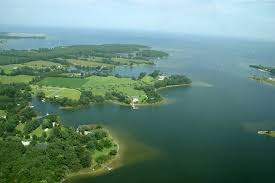This story illuminates the drama that enfolds when groups try to clean up the environment. In this case, it’s about Chesapeake Bay – the largest estuary in the US – a project that’s spanned decades and is nowhere near done.
Once known for its abundant shellfish and fisheries, pollution from agriculture, industry and housing developments has resulted in dead zones where there’s too little oxygen to support life. Since 1983, voluntary measures failed to meet the goal of taking the Bay off the "impaired" list by 2010. Deadline after deadline for improved water quality was missed.

Time to try a different tactic.
It begins with the Clean Water Act which passed in 1972 with a goal of restoring "fishable, swimmable" waters by 1985 – a deadline that remains unmet to this day. To get EPA to do its job, the Chesapeake Bay Foundation sued in 2009 and 18 months later, they settled. Under a binding agreement, EPA promised to develop science-based pollution limits for the Bay and the rivers and streams that feed into it. It delivered on time and surrounding states responded by creating plans to meet those limits with milestones in 2017 and a hard deadline of 2025.
All is well, right? Ready to go? Not quite.
Then the lawsuits started against EPA, first from agricultural and homebuilder lobbies, which are now appealing after losing in court: American Farm Bureau Federation, Pennsylvania Farm Bureau, National Association of Home Builders, Fertilizer Institute, US Poultry & Egg Association, National Pork Producers Council, National Corn Growers Association, National Chicken Council and National Turkey Foundation.
Since these are the polluters the plan would affect, it’s understandable that they would protect their profits – they wanted to keep dumping effluent into the Bay. But this year, 21 states joined them in their appeal, alleging EPA doesn’t have the authority to impose pollution limits.
Why would states as far away as Alaska! oppose restoring the Chesapeake Bay watershed? Others are Kansas, Arkansas, Missouri, Texas, Utah, Wyoming, Montana, Michigan, Nebraska, North & South Dakota, Oklahoma, Indiana, Alabama, Georgia, Kentucky, Louisiana, South Carolina and West Virginia.
The answer is simple: region-wide pollution limits in Chesapeake Bay could well become a model elsewhere. They might have to clean up the Mississippi River watershed (and others) – where a witch’s brew of toxins and silt from farms ends up as dead zones in the Gulf of Mexico.
If they lose, they will likely go to the Supreme Court.
Meanwhile, the cities of New York, Baltimore, Chicago, Philadelphia, Los Angeles and San Francisco filed a joint amicus brief stating their support for EPA’s cleanup plan.
"Even if EPA prevails in court, the fact remains that nearly half the states in the union have sided with nine of the worst polluters in defense of dirty water and business as usual. To all who love fish and wildlife and the wild, beautiful places they abide, that comes like a kick in the solar plexus," says Ted Williams in an extended article on this topic in Fly Rod & Reel, Summer 2014, "Saving American From a Clean Chesapeake."
Perhaps the saddest part is that Chesapeake’s blueprint is working and almost every kind of pollution is declining and nature is responding. Grasses are returning and fish swim again in the once empty Potomac River. Oyster populations are at the highest levels in 30 years and there are fewer dead zones.
Read the Blueprint for restoring Chesapeake Bay.
